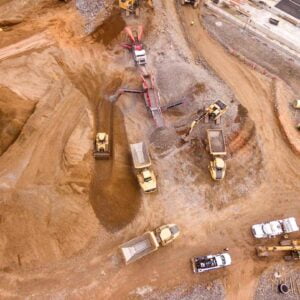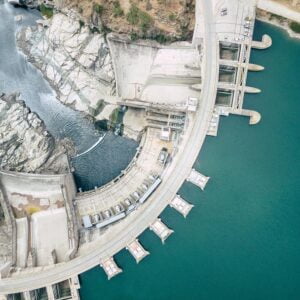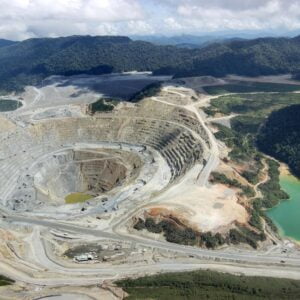Align your organisation with the international asset management standard.
ISO 55000 is the recognised international standard for asset management. It is one of the family of management standards published by the International Organisation for Standardisation (ISO) and sits alongside other standards including ISO 9000 for quality management, ISO 14000 for environmental management and ISO 45000 for safety management. It describes the good practice characteristics of an organisation’s asset management system that should be in place in order to ensure that their assets are being managed well and support achievement of the organisation’s objectives.
ISO 55000 is a certification standard – organisations can be formally assessed and independently certified as being compliant with the requirements of the standard, but you may not wish to bear the time and cost associated with travelling down that path. However, aligning your organisation’s asset management system with the requirements of ISO 55001, whether seeking formal certification or not, provides boards and shareholders with a high level of assurance that risks and costs associated with the management of assets are fully and properly considered and optimised. In other words, it just makes good business sense.
How to get started
The first step towards alignment or certification against ISO 55001 typically consists of a maturity or gap assessment. The outcome of this assessment will be a roadmap and/or detailed implementation plan for asset management improvement which is aligned with the good practice elements contained in ISO 55001.
As a general guide, this improvement roadmap will include actions which address each of the elements below. Note that our approach is tailored towards your specific situation, so we may recommend inclusion of additional elements or omit certain elements as necessary.
- Leadership and culture
- Asset management awareness
- Foundation documents (including asset management objectives, Strategic Asset Management Plan (SAMP) and asset management plans)
- Asset management processes and decision-making criteria (covering the entire asset lifecycle)
- Organisation structure, roles and responsibilities
- Asset management knowledge, information and supporting technologies
- Asset management competence (including training and on-the-job coaching and support)
- Measuring asset and asset management performance and condition
- Risk assessment and management
- Continuous improvement
- Project management of the asset management improvement program
- Change management
How we can support you
In supporting you through this improvement journey, we can (and will) tailor the type and level of support that we provide to make sure that the improvement project will deliver the desired results, within the desired timeframe, at minimum cost.
Support that we can provide to you includes the following:
- Providing high level strategic guidance and advice
- Providing project and program management services
- Performing Quality Assurance on documentation developed by your staff
- Facilitating development of the asset management policy
- Developing and documenting the Strategic Asset Management Plan (SAMP) and asset management strategy
- Developing and documenting asset management plans
- Developing and documenting asset management processes and procedures
- Identifying asset information requirements and developing asset information strategies, standards and plans
- Delivering classroom and online training in asset management concepts, principles and practices at all organisational levels
- Providing on-the-job coaching and guidance to implement improved asset management practices
Related case studies
Ready to get started on your journey to ISO 55001 alignment?
We can support you throughout your journey to alignment against ISO 55001, as well as certification should you choose to obtain it.
To find out more about our capabilities with regards to ISO 55000, feel free to view the case studies above, or contact us for an obligation-free discussion.
Our ISO 55001 training courses
Does your team need improved competency in ISO 55000 principles? Our suite of asset management training courses are run throughout Australia and online, and offer an in-depth, practical view of implementing ISO 55000 in your organisation.
-
 Asset Management Master ClassOriginal price was: $4,795.00.$4,315.50Current price is: $4,315.50.
Asset Management Master ClassOriginal price was: $4,795.00.$4,315.50Current price is: $4,315.50. -
 Implementing an ISO 55001 Compliant Asset Management SystemOriginal price was: $2,275.00.$2,047.50Current price is: $2,047.50.
Implementing an ISO 55001 Compliant Asset Management SystemOriginal price was: $2,275.00.$2,047.50Current price is: $2,047.50. -
 Asset Management Foundation AwardOriginal price was: $1,195.00.$1,075.50Current price is: $1,075.50.
Asset Management Foundation AwardOriginal price was: $1,195.00.$1,075.50Current price is: $1,075.50. -
 Effective Asset Management Strategies and Plans$967.50 – $1,075.00
Effective Asset Management Strategies and Plans$967.50 – $1,075.00
Our ISO 55001 articles
Still have questions about ISO 55001?
ISO 55000 is the international standard for Asset Management, developed by the the International Organisation for Standardsation (ISO) and was published in January 2014. For more information on this standard, please read our article “What is ISO 55000?”
PAS 55 is a Publically Available Specification issued by the British Standards Institute. As such, it does not carry the same level of influence as a full standard issued by the International Organisation for Standardsation (ISO). For more information on PAS 55, please read our article What is PAS 55?. In contrast, ISO 55000 is being developed by the the International Organisation for Standardsation (ISO) and will become the international standard for Asset Management on its release in late 2013 or early 2014. ISO 55000 will be one of ISO’s series of Management Standards, and will sit alongside its other management standards, including ISO 9000 for Quality Management, ISO 31000 for Risk Management, ISO 18000 for Occupational Health and Safety, ISO 14000 for Environmental Management and others. As such, it will carry a similar structure, look and feel to those other ISO Management standards, which is quite different to the current structure of PAS 55.
As ISO 55000 has just been released, there is currently no assessment tool available for assessing compliance with ISO 55000. The closest tool that we are aware of, is the Companion Guide to ISO 55000 available from the Asset Management Council of Australia, and does provide some guidance, at a very high level, that will assist you in identifying gaps. It is available for purchase from the AM Council. We understand that the Institute of Asset Management (IAM) is updating its PAS55 Assessment Methodology (PAM) Tool to permit this to also be used to perform ISO 55000 gap assessments. This is currently free to download by paying IAM members. Assetivity also applies an assessment tool for its clients. If you are interested in having a gap assessment conducted, please contact us.
Following release of ISO 55000, the British Standards Institute announced that it will withdraw PAS 55 in January 2015, 12 months after the publication of ISO 55000. During the intervening period, PAS 55 will be available for purchase, and organisations can continue to be certified as compliant with PAS 55. , We believe that PAS 55 is a useful document, however, and we hope that it will be available in some form (perhaps from the IAM itself) following its withdrawal by the British Standards Institute. Clearly, over time, ISO 55000 will become the reference document of choice.
Certification against PAS 55 is undertaken by independent certifying bodies. Many (but not all) of these are endorsed by the Institute of Asset Management as Endorsed Assessors (Assetivity is an IAM Endorsed Assessor). Certification against PAS 55 is not monitored or accredited by either the British Standards Institute or the International Standards Organisation, and so we do not see the release of ISO 55000 as having any impact on organisations that either are, or wish to be, certified to PAS 55. However we believe that, over time, following release of ISO 55000, ISO 55000 will become the preferred standard against which organisations and their key stakeholders (including regulators, insurance companies, customers and shareholders) will wish to be assessed.
Unlike PAS 55 (where there are no formal requirements in place for assessors/certification bodies, other than the voluntary IAM Endorsed Assessor scheme), organisations that wish to issue certificates of compliance against the requirements of ISO 55000 will be required to meet all the requirements of ISO and its associated bodies, including meeting the requirements of ISO 17021. This will also include meeting the specific competency requirements for assessing Asset Management Systems (which includes relevant knowledge and experience in Asset Management) contained within Part 5 of this standard, once this is published. At present, we believe that there are no certifying bodies which are approved by ISO for certifying against ISO 55000. Assetivity intends to become an approved certifying body for ISO 55000, just as soon as this becomes possible. For more information regarding ISO 55000 certification, please read our article Your Guide to ISO 55000 Certification.
There are many benefits to aligning your Asset Management system with the requirements of ISO 55000, whether you end up formally certifying your Asset Management System to ISO 55000 or not. These include:
- Greater alignment between your organisation’s overall strategy and its Strategic Asset Management plans
- More formal consideration of, and improved optimisation of the Costs, Benefits and Risks associated with Physical Assets
- More formal consideration of, and improved optimisation of short-term and longer term decisions relating to Physical Assets
- Greater alignment and cooperation between all the organisational functions contributing to Asset Performance, including Marketing, Engineering, Operations, Maintenance, Finance and Supply
- Demonstrable rigour and discipline to meet the requirements and expectations of technical and economic regulators
- Demonstrable rigour and discipline to meet the requirements and expectations of customers and shareholders
- Lower costs, greater revenues and other benefits, lower risks




